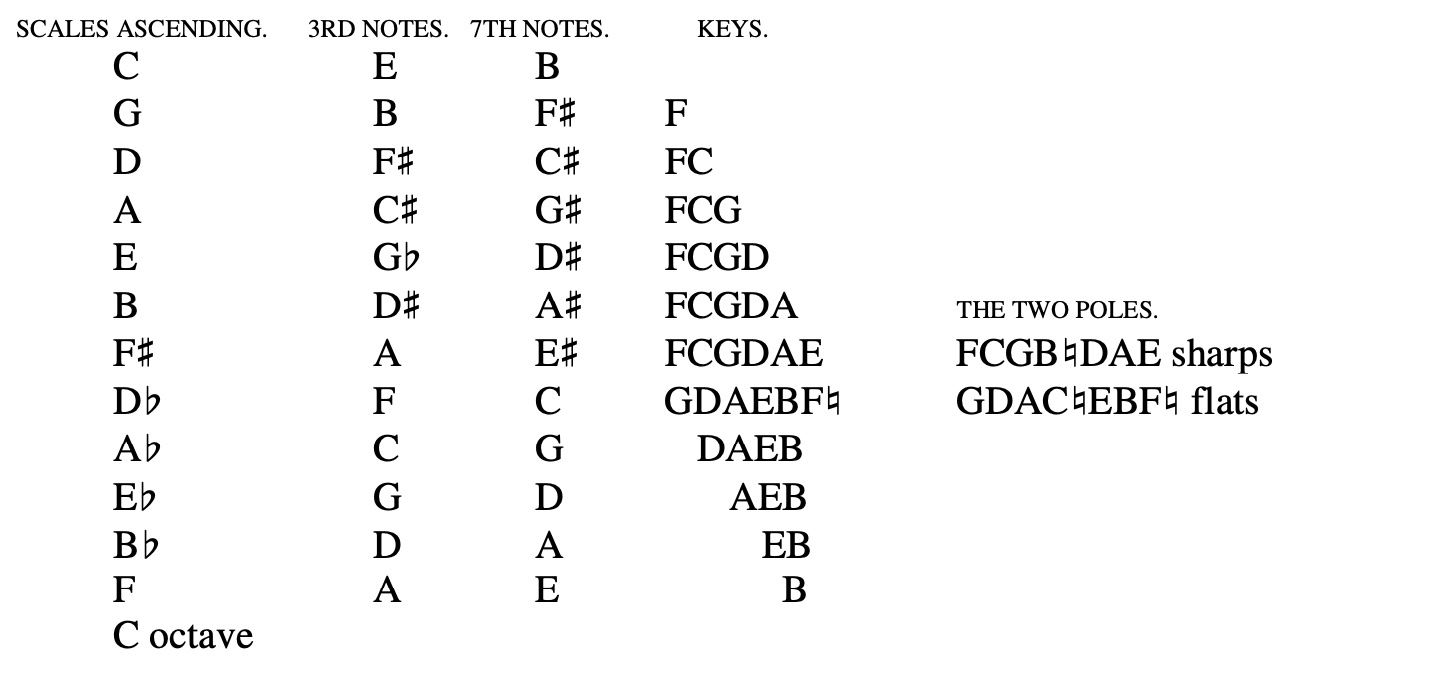Hughes
The key-note C sounding from within itself its six tones to and fro in trinities, the tones written as notes in musical clef
—The trinities hereafter termed primaries and secondaries
—The seven of each of the twelve key notes developing their tones
—The order in which the tones meet, avoiding consecutive fifths
—Dissonance is not opposition or separation
—The use of the chasms and double tones is seen
—The isolated fourths sound the twelve notes
—Each double tone developes only one perfect major harmony, with the exception of F#-G?; F# as the key-tone sounds F? as E#, and G? as the key-tone sounds B? as C?
—The primaries of the twelve key-notes are shown to sound the same tones as the secondaries of each third harmony below, but in a different order
—All harmonies are linked into each other, . 23 [Harmonies of Tones and Colours, Table of Contents2 - Harmonies]
The difference in the development of a major and a minor harmony
—The twelve developing keys mingled
—D? shown to be an imperfect minor harmony
—E? taking B? as C? to be the same as D#
—The intermediate tones of the seven white notes are coloured, showing gradual modulation
—As in the diagram of the majors, the secondaries are written in musical clef below the primaries, each minor primary sounding the secondaries of the third harmony below, but in a different order, and one tone rising higher, . . . . . 34 [Harmonies of Tones and Colours, Table of Contents3 - Harmonies]
The only exception is the double tone F#-G?, which is a curious study. F# as a harmony takes the double tones as sharps, and F? is E#. G? is also a harmony sounding the same tones, by taking the double tones as flats, and B? as C?. F# therefore takes the imperfect tone of E#, and G? the imperfect tone of C?. (See here the harmony of G? in musical clef.) [Harmonies of Tones and Colours, Combinations of dissonance, rests, page 24]

The Minor Gamut modulating in the meeting of fifths through seven octaves. We may here trace the twelve, each fifth note becoming the higher key-note. But the sixth and seventh notes of the scale are discords. For example, in the key of A, the sixth note, F?, is a discord with the second note, B?; and the seventh note cannot be sounded as G# falling into the eighth, without being a discord with the third note, C?. No octave can be sounded in the Minor Scale, as it has risen into the fifth higher key of E. [Harmonies of Tones and Colours, The Minor Gamut Modulating in the Meeting of Fifths61, page 65]
See Also
